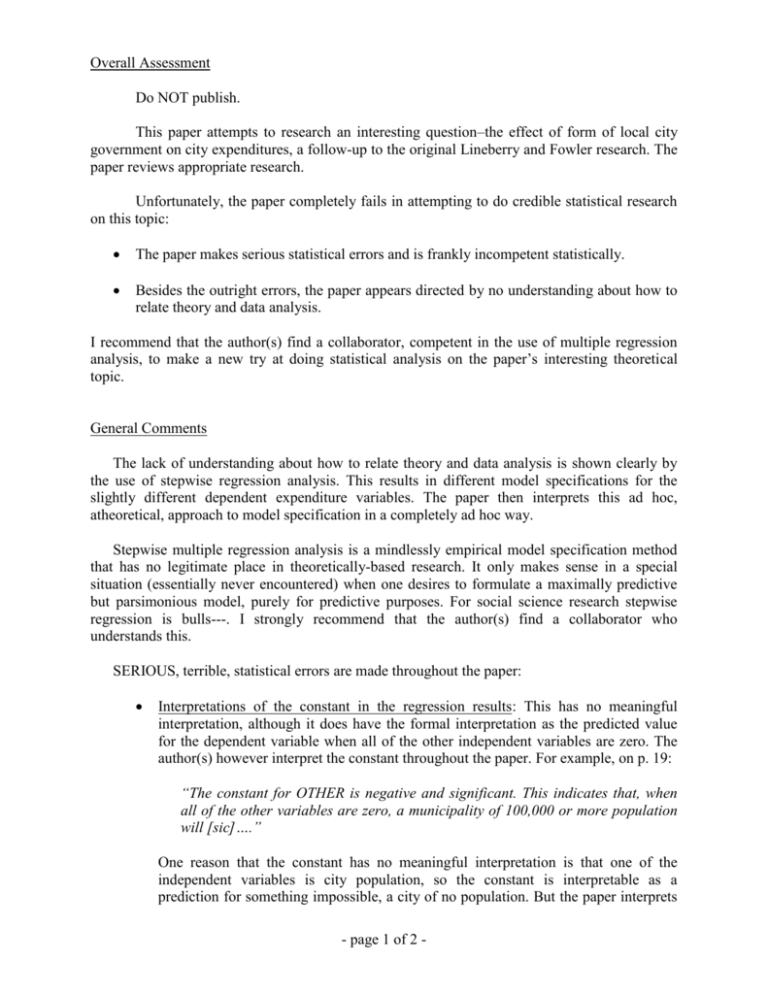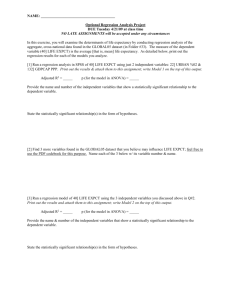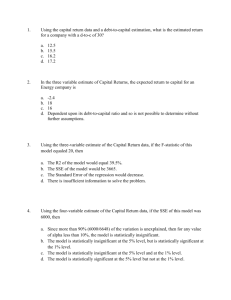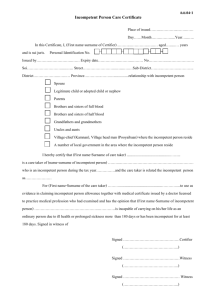Manuscript # 03021
advertisement

Overall Assessment Do NOT publish. This paper attempts to research an interesting question–the effect of form of local city government on city expenditures, a follow-up to the original Lineberry and Fowler research. The paper reviews appropriate research. Unfortunately, the paper completely fails in attempting to do credible statistical research on this topic: The paper makes serious statistical errors and is frankly incompetent statistically. Besides the outright errors, the paper appears directed by no understanding about how to relate theory and data analysis. I recommend that the author(s) find a collaborator, competent in the use of multiple regression analysis, to make a new try at doing statistical analysis on the paper’s interesting theoretical topic. General Comments The lack of understanding about how to relate theory and data analysis is shown clearly by the use of stepwise regression analysis. This results in different model specifications for the slightly different dependent expenditure variables. The paper then interprets this ad hoc, atheoretical, approach to model specification in a completely ad hoc way. Stepwise multiple regression analysis is a mindlessly empirical model specification method that has no legitimate place in theoretically-based research. It only makes sense in a special situation (essentially never encountered) when one desires to formulate a maximally predictive but parsimonious model, purely for predictive purposes. For social science research stepwise regression is bulls---. I strongly recommend that the author(s) find a collaborator who understands this. SERIOUS, terrible, statistical errors are made throughout the paper: Interpretations of the constant in the regression results: This has no meaningful interpretation, although it does have the formal interpretation as the predicted value for the dependent variable when all of the other independent variables are zero. The author(s) however interpret the constant throughout the paper. For example, on p. 19: “The constant for OTHER is negative and significant. This indicates that, when all of the other variables are zero, a municipality of 100,000 or more population will [sic]….” One reason that the constant has no meaningful interpretation is that one of the independent variables is city population, so the constant is interpretable as a prediction for something impossible, a city of no population. But the paper interprets - page 1 of 2 - the constant as a prediction for a city of 100,000! This illustrates why I said above that the paper is incompetent statistically. The paper in numerous places (e.g. p. 18, next to last line) interprets the standardized regression coefficient by giving it a meaning correct only for the unstandardized coefficient. This illustrates why I said above that the paper is incompetent statistically. The paper makes errors in numerous places (e.g. pp. 15-16) in interpreting the predicted differences between categories of independent variables represented using dummy variables. Instead of making correct inferences using the unstandardized dummy variable regression coefficients, the paper does some nonsense manipulations using the constant. This illustrates why I said above that the paper is incompetent statistically. Specific Comments The term “enter regression process” is used throughout the paper, and is awkward and not normal statistical terminology. What the paper refers to as “figures” should be called “tables”. (I’ll refer to them below as “figures”, however, as done in the paper”.) P. 12 gives an R2 statistic when interpreting Figure 1, but that statistic is not on Figure 1. I suggest you give figure numbers when referring to figures. p. 12 (sig =.909): Fig. 1 shows .768, not .909. I normally provide more specific comments and suggestions for papers I review, citing specific pages and lines. Since I feel that this paper needs to be completely redone, however, I will not provide more comments now. - page 2 of 2 -











